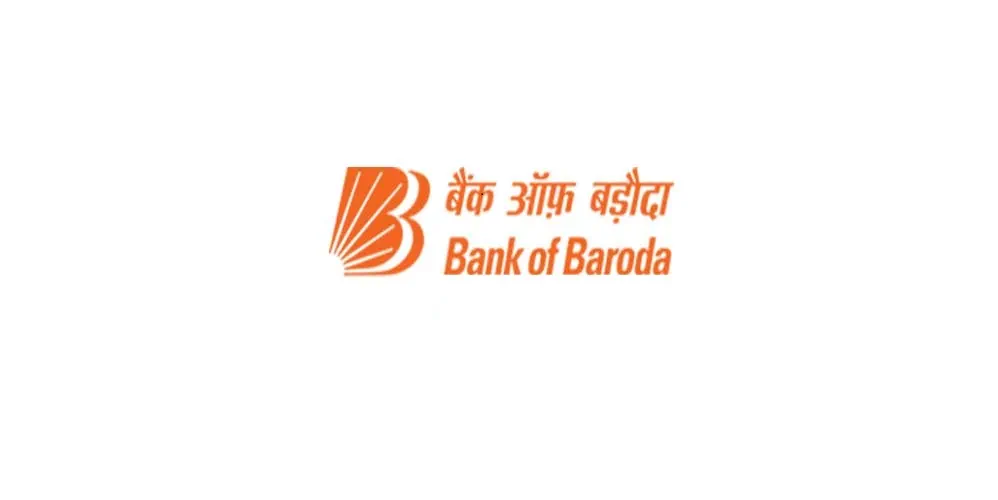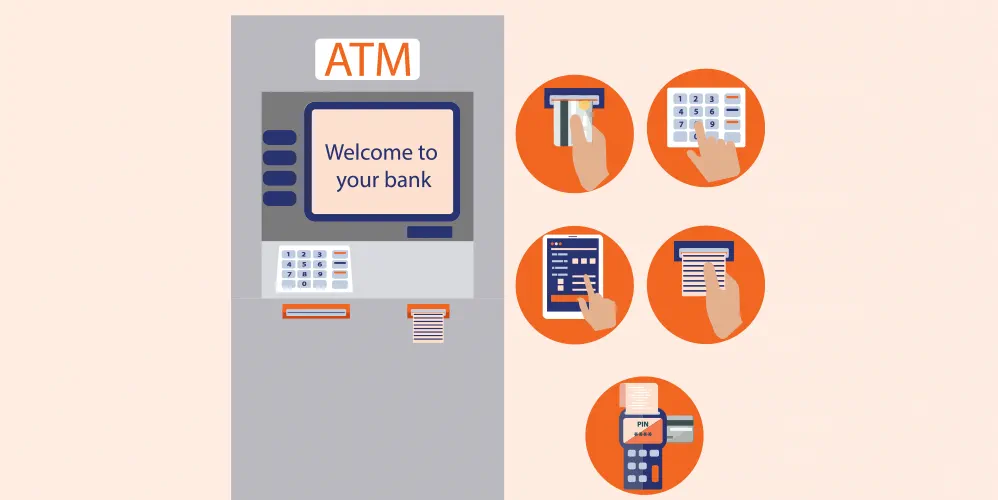
भारत में डिजिटल बैंकिंग का भविष्य
15 दिसम्बर 2022

Table of Content
Growth of Digital Banking in India
Covid- 19 has successfully established a new dimension to the future of digital banking in India. India saw a meteoric rise in digital adoption in that period. The emergence of new digital participation from other financial entities aided transition at the micro level. A global survey by Mastercard reveals Indians as the most willing in the Asia Pacific to embrace emerging digital payment methods. Boston Consulting Group's (BCG) research report further points out that digital growth in India attributes to a 'surplus of capital, maturing infrastructure and favourable underlying customer demographics.' Indian banking is setting an example as a 'model banking of the future,' paving way for successful UPI payments, and QR codes. This approach should be adopted for lending and data management too.
Digital transformation in Indian banking is based on these key factors of growth.
- Banks while utilising customer awareness build a solid ground for trust. Being a brand, they have a customer base and versatile digital platforms.
- Existing financial services have given further leverage to their assets.
- Banks are providing unique and compelling value propositions in their commercial offerings, owning tech stacks, that are 100% automated, recording a strong digital performance backed by staff agility.
- Marketing and credit depend on data and analytics.
- Risk management in digital banking is higher and more accountable in the banking sector.
What Encouraged and Accelerated this Massive Shift to Digital Banking?
Shri Shaktikanta Das, Governor, Reserve Bank of India, attributes the growth in digital banking to 'higher levels of sustainable development and financial inclusion.’ Deep telecom penetration, the availability of the internet and the ready adaptation of technology has accelerated credit access and efficient payment systems for now and the future of digital banking are all responsible for this flourishing growth. The pandemic acted as a catalyst for this transformation. Here is a quick check of the major factors:
- Transformation in Banking: The advent of new technologically powered payment methods like digital currency, blockchain and distributed ledger systems has enabled the adoption of fintech (financial technology).
- Willingness to adopt: Last year 93% of payments were made through digital methods and more than 50% of these transactions were done via QR Code. The use of cash was the third most popular option, and the use of cards went down further. The most active users are Gen-Z (ages 18 to 25) with a 37 per cent and 48 per cent Millennials (ages 26 to 43). Mastercard Indian consumers’ payment preferences report.
- Consumer comfort with digital payment methods: Consumers have access to wearable technology, mobile wallets, credit cards and debit cards and QR codes that enable such payments. The trust that consumers are showing in these payment modes should be respected by fintech players, banks, regulators and most importantly the government for the strong future of the banking industry.
- Growth in biometric payment: Consumers prefer biometric payment over cards or devices. Also, there is growing trust in biometrics over two-factor authentication according to the Mastercard Indian consumers’ payment preferences report.
- Readily using BNPL:Indian consumers have resisted a fairly high usage of BNPL (Buy Now, Pay Later), and they reserve the payment mode for emergencies. There is a large section that felt that they would use this option if it were backed by a major payment network.
- Increase of digital tech talent: India is closing the digital gap in fintech with its optimised skill sets of talented technology professionals.
- Nationwide financial inclusion: Fintech innovations like the Indian stack are speeding greater financial inclusion even in the tier III+ sectors.
- Banks want sustainable growth:Financial institutes must display a robust growth model based on efficiency and accessibility. Traditional banks recognised the role of digital banking in this sphere.
- Covid-19 accelerated growth:During COVID 19 banks recognised the need to respond to customer demand. Banks offered technology that provided financial safeguard, with 24x7 banking, credit, and direct benefit transfer among other services.
Why is it essential for banks to take the Digital Transformation Route?
Digital transformation in banking is the new go-to when banking products and services are customer-centric and personalised. Let us evaluate why banks need to take the digital route.
- Covid 19 eye opener:The Covid pandemic made the world more aware of the importance of contactless payment and digital banking.
- Change in banking demography: Banks are seeing new customer demography that is greatly reliant on digital platforms. These are early adopters of the internet and banks have to fulfil the demands of this generation.
- Banks are facing competition: The competition is just not between private and public banking services but other fintech players rolling out attractive products for customers. Due to strong branding with robust cyber security in banking, digital banks will draw the customer's thrust.
Bridging the Gap Towards Digital Banking
Though India is experiencing a huge inclusivity agenda in future of digital banking, we discuss the holding points that need to be bridged for better digital transformation in banking.
Obstruction in digital inclusion: Digital banking facilities are not reaching places without internet connections. Not everyone is technically savvy and therefore hesitant. India has low literacy levels that impedes digital awareness.
- Fear factors creating resistance:Lack of education and awareness is creating fear of online fraud and cybercrimes. Banks should adopt measures to improve customer awareness.
- Stay abreast with new technology: Banks should keep their digital innovating products and security platforms upgraded with help from specialised professionals to edge out competition.
- Inclusion on Robotic Process Automation (RPA):Channelling repetitive and monotonous tasks to Machine Learning and Artificial Intelligence, banks can provide fillip to their performance.
The Conclusion
India is going through an environment of change in banking and financial technology, led by an amazing talent base. With a mindset to adapt, a simultaneous effort from the government and the watchful eye of RBI, innovation in digital banking will charter new areas of customer inclusion. With the introduction of the Digital Banking Unit (DBU), a minimum digital infrastructure hub delivering banking services and the future inclusion of metaverse in digital banking with its huge potential, the future of digital banking looks promising and optimistic.
Popular Articles
Related Articles



What is CVV on a Debit Card? Understanding Its Importance and Security Features


How to Update Your FASTag KYC: Step-by-Step Guide for Online & Offline Methods




The Importance of Pension Funds: Secure Your Future with Steady Retirement Income

-
डिस्क्लेमर
इस लेख/इन्फोग्राफिक/चित्र/वीडियो की सामग्री का उद्देश्य केवल सूचना से है और जरूरी नहीं कि यह बैंक ऑफ बड़ौदा के विचारों को प्रतिबिंबित करे। सामग्री प्रकृति में सामान्य हैं और यह केवल सूचना मात्र है। यह आपकी विशेष परिस्थितियों में विशिष्ट सलाह का विकल्प नहीं होगा । बैंक ऑफ बड़ौदा और/या इसके सहयोगी और इसकी सहायक कंपनियां सटीकता के संबंध में कोई प्रतिनिधित्व नहीं करती हैं; यहां निहित या अन्यथा प्रदान की गई किसी भी जानकारी की पूर्णता या विश्वसनीयता और इसके द्वारा उसी के संबंध में किसी भी दायित्व को अस्वीकार करें। जानकारी अद्यतन, पूर्णता, संशोधन, सत्यापन और संशोधन के अधीन है और यह भौतिक रूप से बदल सकती है। इसकी सूचना किसी भी क्षेत्राधिकार में किसी भी व्यक्ति द्वारा वितरण या उपयोग के लिए अभिप्रेत नहीं है, जहां ऐसा वितरण या उपयोग कानून या विनियमन के विपरीत होगा या बैंक ऑफ बड़ौदा या उसके सहयोगियों को किसी भी लाइसेंसिंग या पंजीकरण आवश्यकताओं के अधीन करेगा । उल्लिखित सामग्री और सूचना के आधार पर किसी भी वित्तीय निर्णय लेने के लिए पाठक द्वारा किए गए किसी भी प्रत्यक्ष/अप्रत्यक्ष नुकसान या देयता के लिए बैंक ऑफ बड़ौदा जिम्मेदार नहीं होगा । कोई भी वित्तीय निर्णय लेने से पहले अपने वित्तीय सलाहकार से सलाह जरूर लें।
वर्ष 2023 के लिए ध्यान में रखने योग्य डिजिटल बैंकिंग रुझान
बैंकिंग में प्रौद्योगिकी के आगमन के साथ, हम पहले से ही बैंकिंग में डिजिटलीकरण के भारतीय आबादी को प्रभावित करने के तरीके में एक महत्वपूर्ण बदलाव का अनुभव कर रहे हैं। भारतीय उपभोक्ताओं, व्यापारियों और स्थानीय विक्रेताओं को कैशलेस वित्तपोषण की तकनीक की आदत हो रही है। बैंकिंग ऐप भी ग्राहक आसानी और समाधान पर केंद्रित हैं, सहज विश्लेषण के साथ सभी ग्राहक की जरूरतों को टैप करते हैं, अन्य अधिक जटिल समाधानों के लिए भुगतान गेटवे की मेजबानी करते हैं, यह प्रवृत्ति आने वाले वर्षों में और अधिक दूर जाएगा। हालांकि इस प्रवृत्ति ने युवा पीढ़ी पर ज्यादा ज़ोर दिया है मगर पुरानी पीढ़ी को बदलाव के लिए कम सक्रिय करना भी उतना ही महत्वपूर्ण है। इसके अलावा, जबकि शहरी आबादी भुगतान, निवेश और क्रेडिट के माध्यम से फिनटेक द्वारा समग्र रूप से जकड़ी हुई है, डिजिटल विभाजन ग्रामीण क्षेत्रों में दृढ़ता से देखा जाता है जहां अभी भी प्रौद्योगिकी, शिक्षा और प्रशिक्षण की कमी है। जबकि COVID-19 ने बड़े पैमाने पर डिजिटल समावेशन को छलांग लगा दी, पूरी आबादी को डिजिटल पारिस्थितिकी तंत्र के तहत लाने के लिए क्षेत्रीय भाषा, क्षेत्र-विशिष्ट अध्ययनों के माध्यम से अधिक पहुंच की आवश्यकता होगी, जिसमें ऑफ़लाइन एम्बेस्डरों के माध्यम से जैविक विकास के साथ एक स्थानीय कनेक्शन बनाना होगा। हम जानते हैं कि भारत में, सरकार ने पहले ही इन पहलों को सक्रिय रूप से आरंभ कर दिया है, आइए देखें कि फिनटेक डिजिटल बैंकिंग के लिए डिजिटल बैंकिंग रुझान वर्ष 2023 क्या है।
डिजिटल बैंकिंग के प्रकार
भारत में विभिन्न प्रकार की डिजिटल बैंकिंग प्रणालियों ने न केवल शहरी अभिजात वर्ग को प्रभावित किया है बल्कि ग्रामीण क्षेत्र में भी इसका विस्तार हो रहा है। डिजिटल बैंकिंग को विभिन्न प्रकार के डिजिटल भुगतानों द्वारा वर्गीकृत किया गया है। डिजिटल भुगतान के ये तरीके नकद और चेक की जगह इलेक्ट्रॉनिक साधनों का उपयोग करते हैं। आइए इस पर विस्तार से चर्चा करें।

